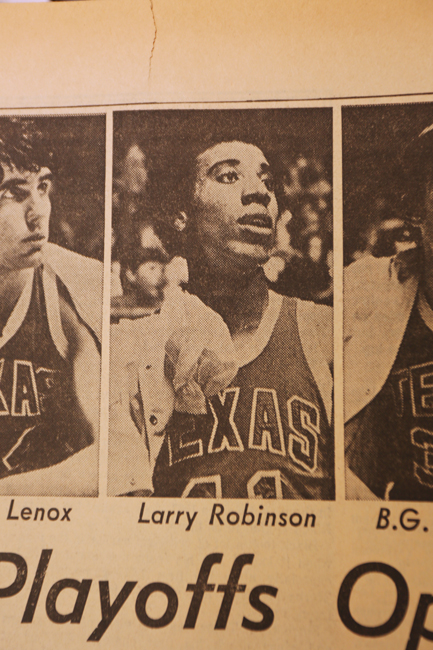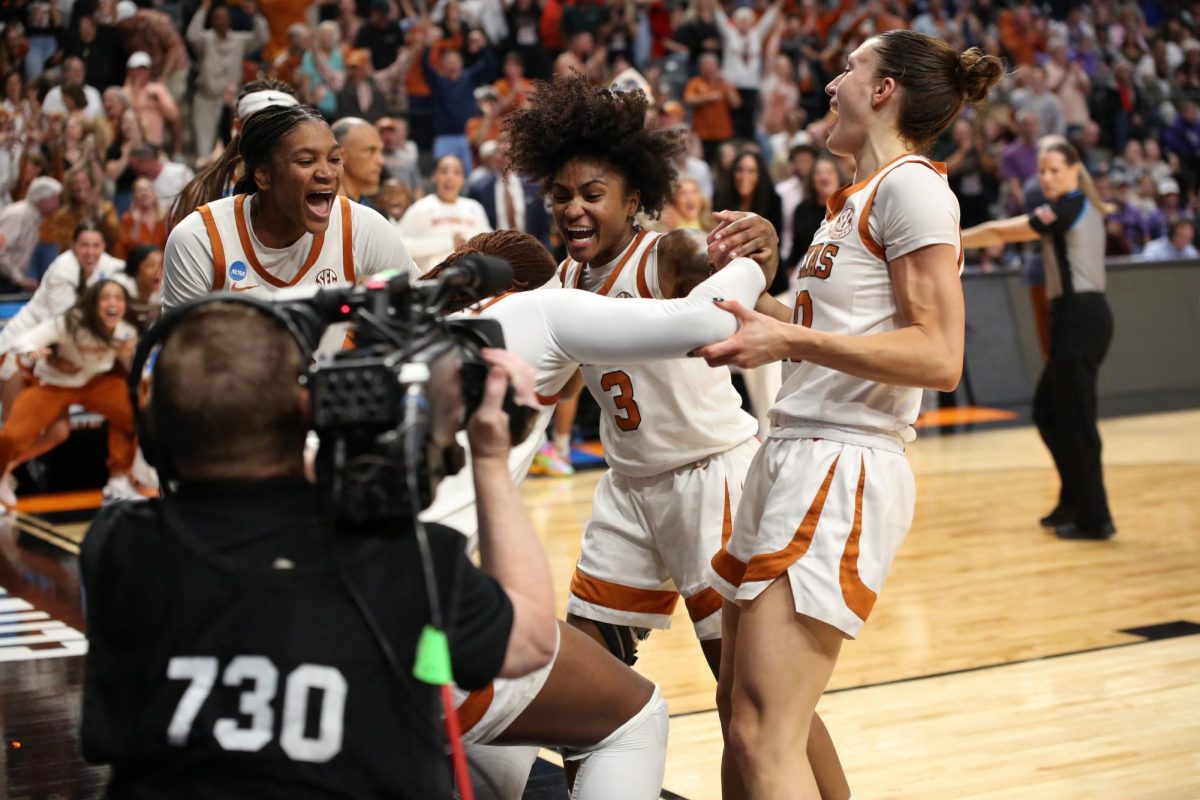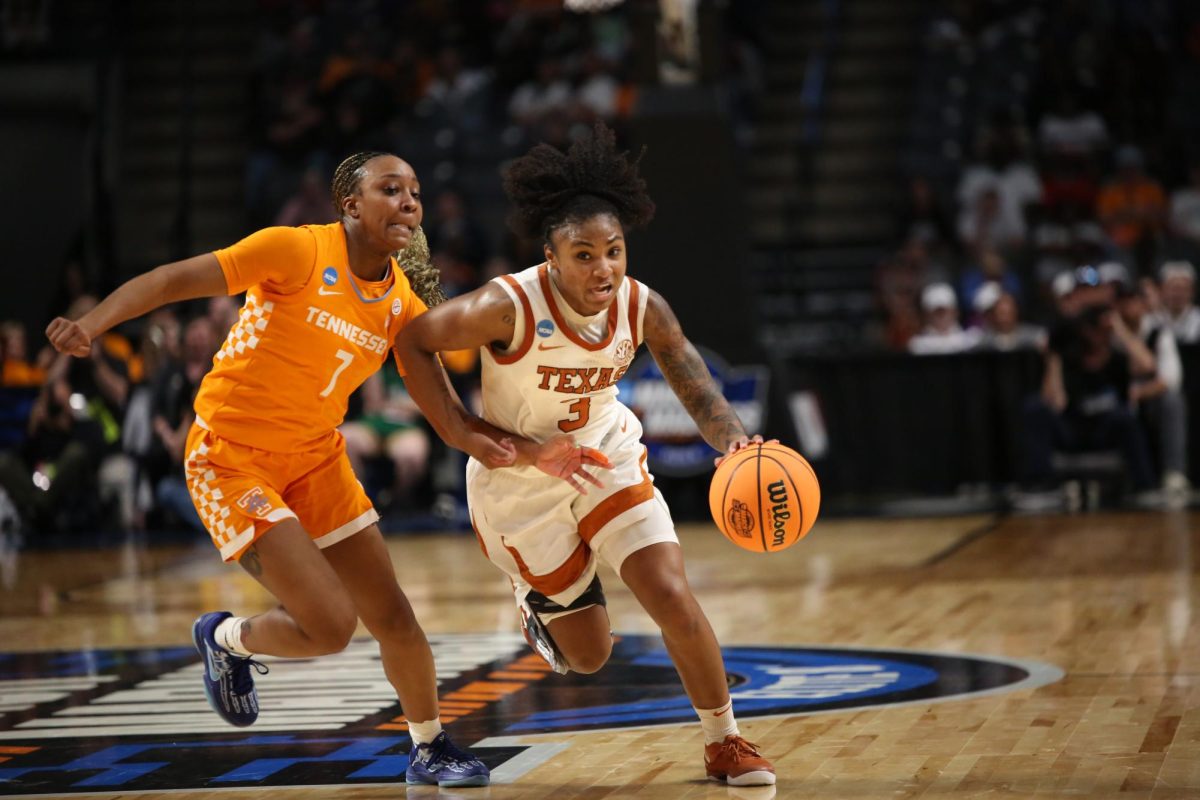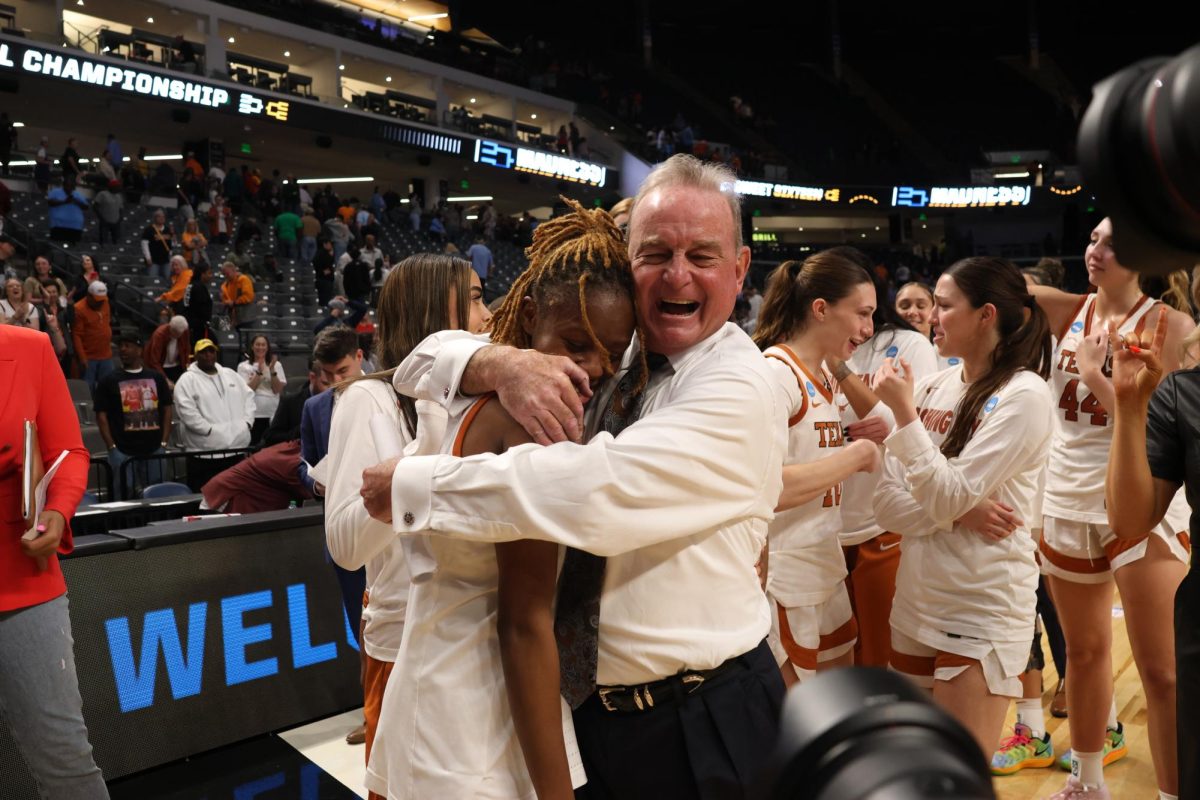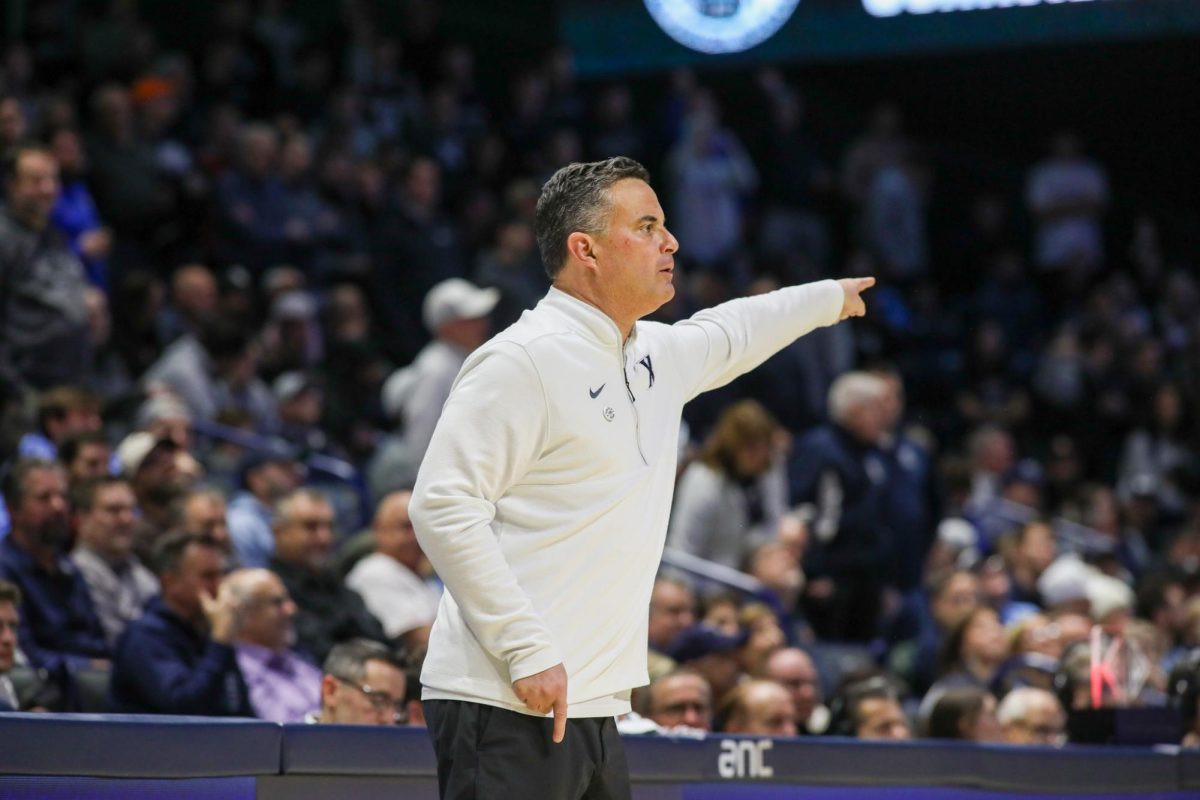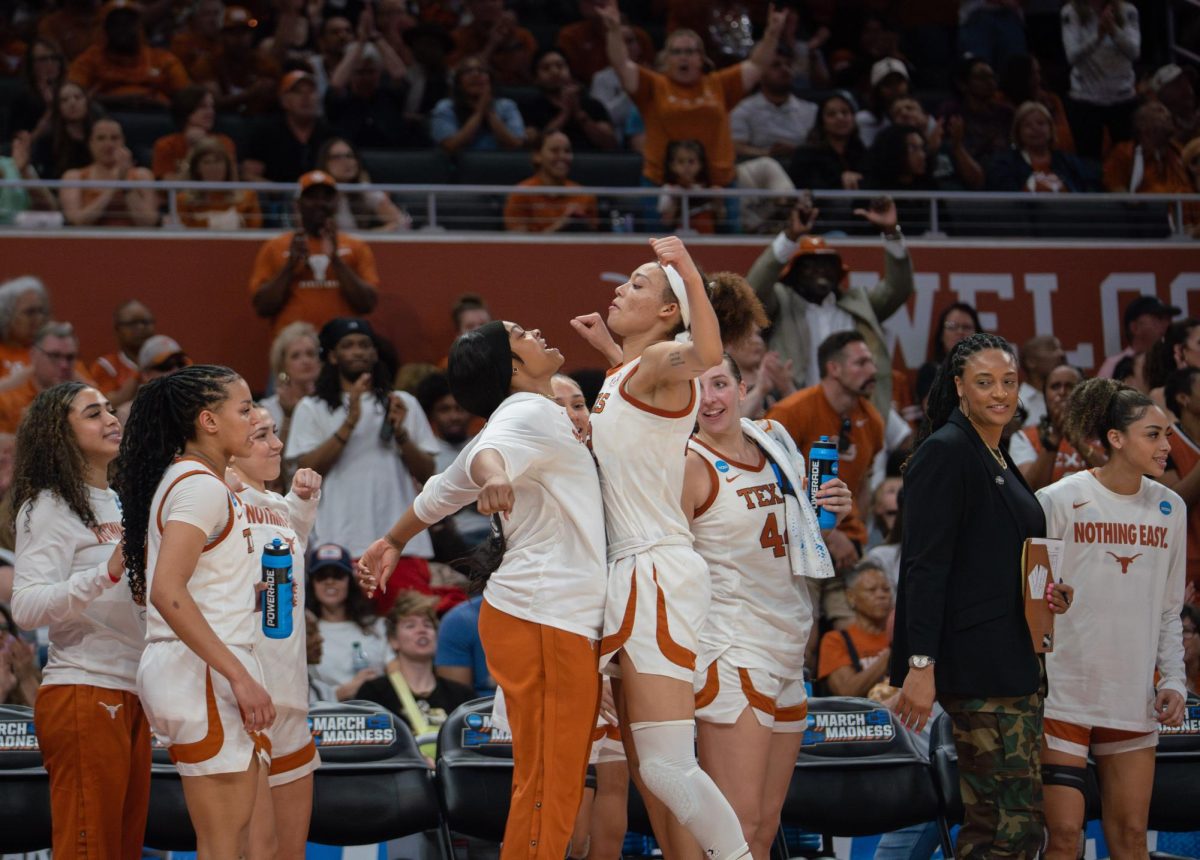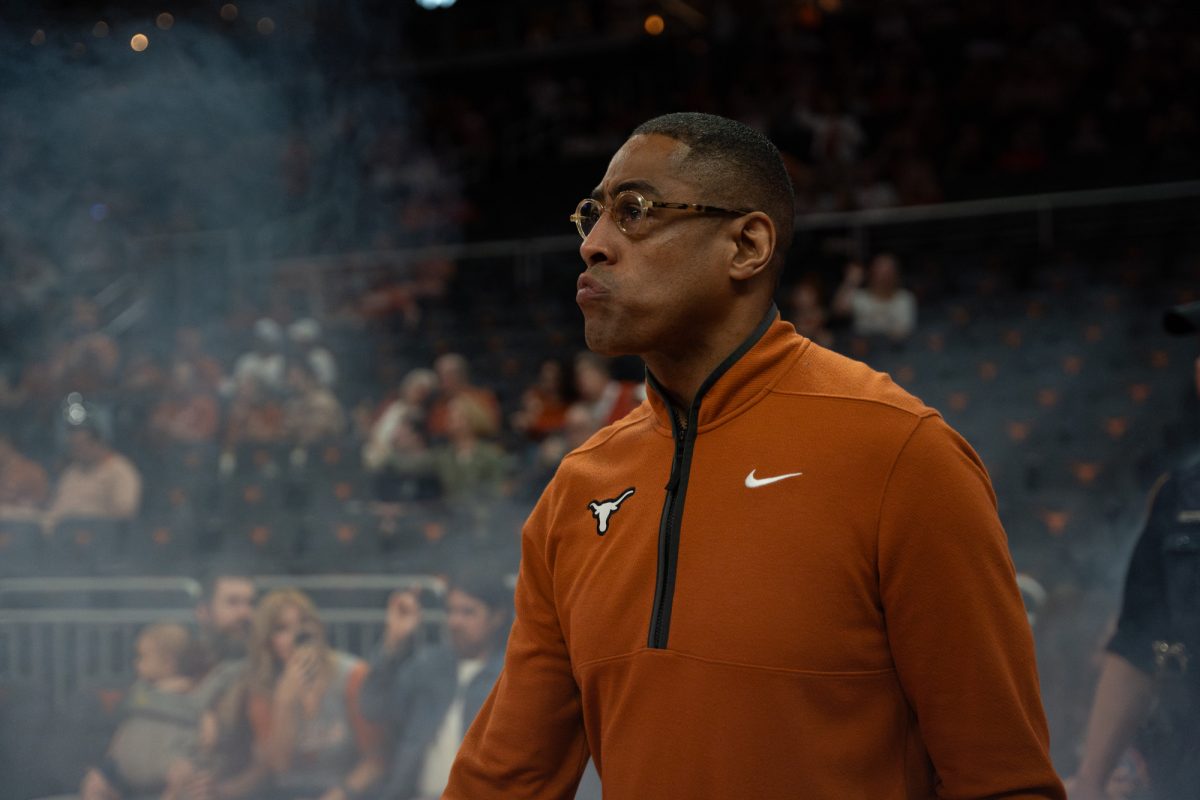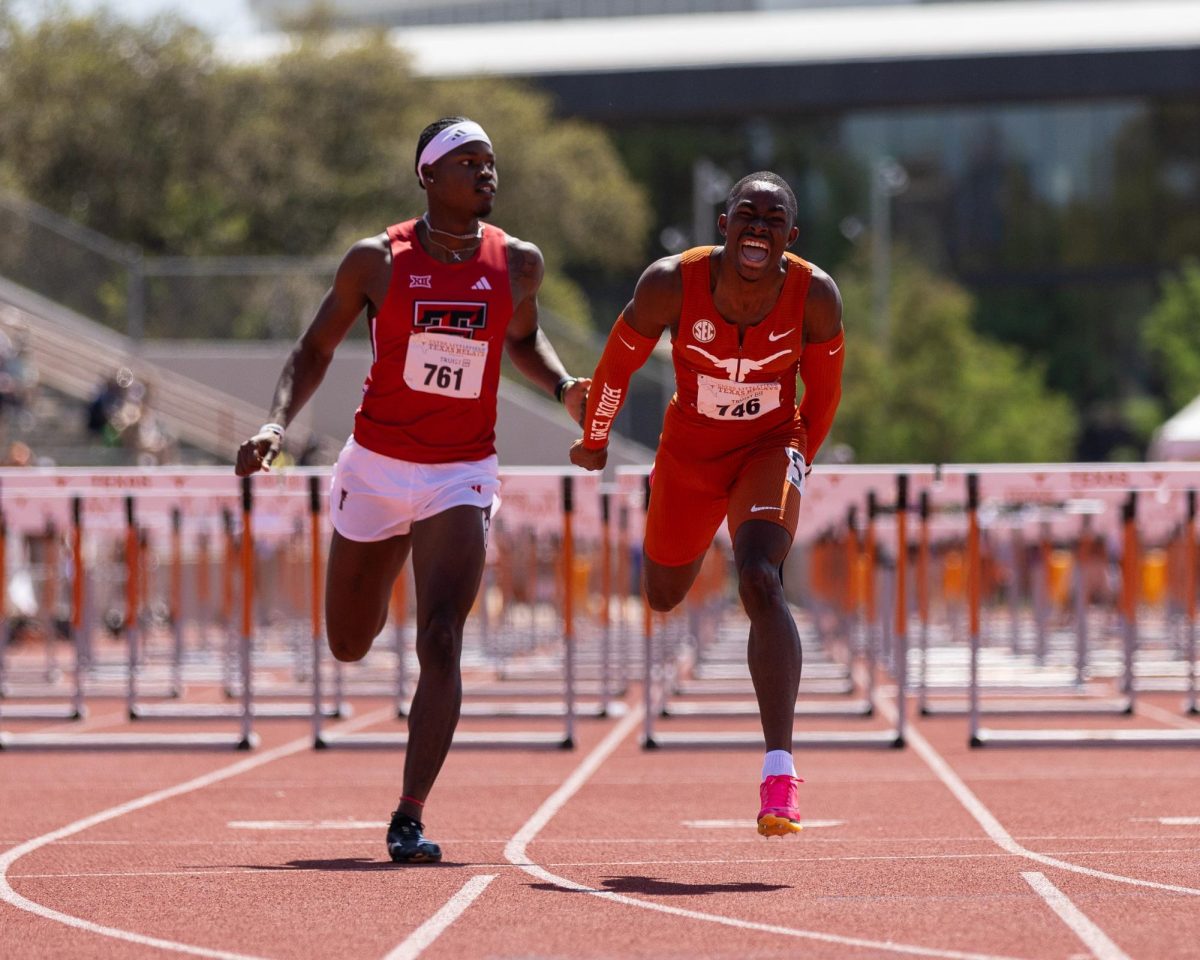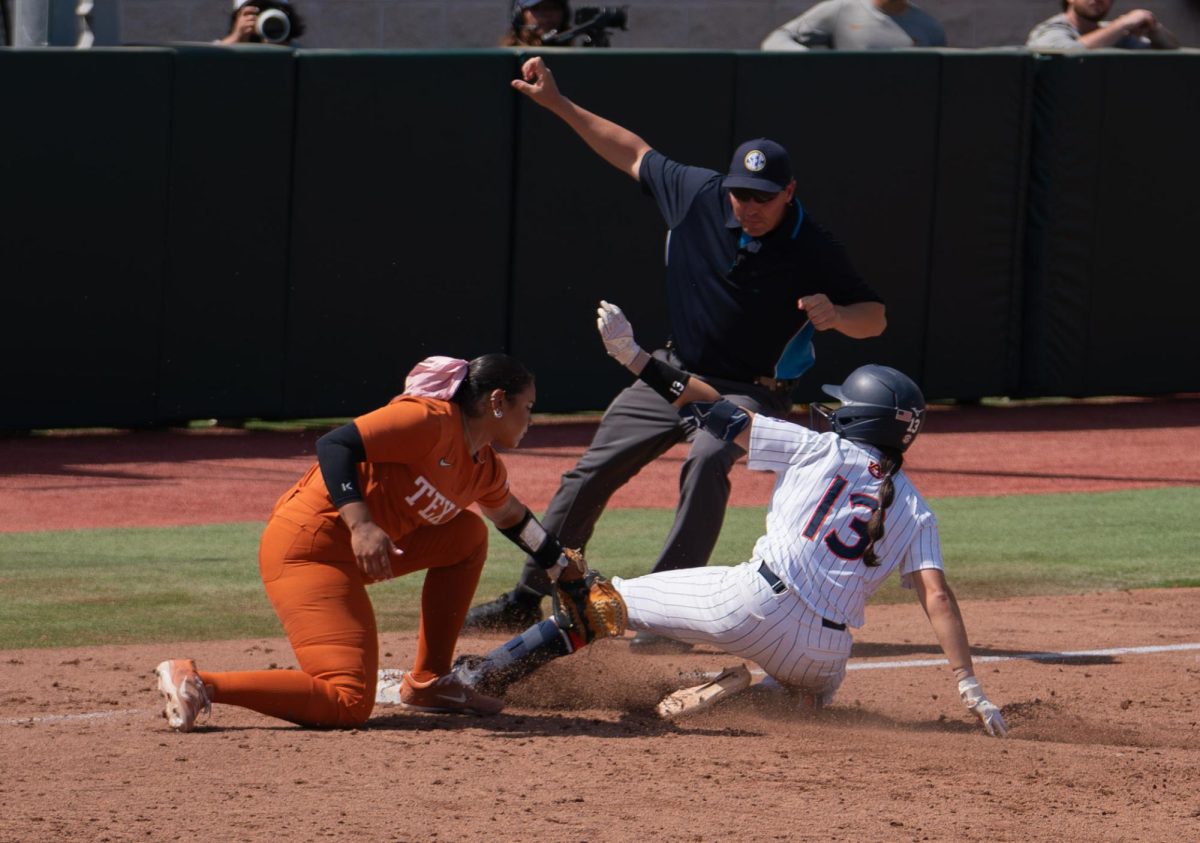Editor’s Note: This is part two of a two-part series about the racial integration of Texas’ men’s basketball team. Part one, which was published Wednesday, told the story of the first African-American basketball players to come to Texas. To read the first story, click here.
At Hobbs High School in 1970 in Hobbs, New Mexico, Larry Robinson was expecting royalty.
As a standout basketball athlete his senior year, a variety of colleges recruited Robinson. But Leon Black, Texas’ then-head coach, and his assistants stopped by his school to make their pitch.
“We decided we were going after Larry Robinson, and that’s who we wanted,” Black said. “We needed people with athletic ability.”
Robinson, a tall yet thin basketball player, was one of the best players in the southwest region at the time. After minimal production early in his high school career, he became a starter his senior season and gained the attention of multiple colleges. And, in 1970, he would become the first black player to sign a letter of intent for Texas basketball, helping to integrate the Longhorns after a long process of integration through the 1960s.
When Robinson first decided to play at Texas, he received mixed feedback. But Texas’ legacy as a predominantly white institution and mainly a football school didn’t bother him.
“When I decided to go to Texas, people said, ‘Larry, why wouldn’t you go to a basketball school?’” Robinson said.
Robinson would soon change their minds. As a freshman, he averaged 33.9 points and 16.8 rebounds per game. He started in all 16 games, even recording 55 points in a single contest against TCU.
“In Austin, he was like a celebrity,” freshman teammate Rick Kruger said. “He made friends with everybody and, in my opinion, he handled everything pretty well.”
During the 1971–1972 season, he led Texas to its first Southwest Conference championship and an appearance in the Midwest Regional of the NCAA Tournament. The 1973 media guide said Robinson “lived up to extremely high expectations, … acclaimed by some to be the best ever at Texas.”
The idea of spearheading Texas’ basketball integration didn’t faze Robinson. He grew up in a family that didn’t put much emphasis on race. He went to integrated schools starting in the third grade, interacting and playing with white athletes growing up.
But when he started at Texas during the 1970–1971 season, one of Robinson’s first encounters with his new teammates freshman year gave him an early introduction to the team’s dynamic. Early in the season, after practice ended one day, Robinson and Kruger, a white student, snuck back into Gregory Gymnasium to play what would become a vicious one-on-one game after arguing in practice.
“It got so physical,” Robinson said. “We started fighting. We went down to the dressing room and were fighting all the way down there.”
Once things settled, Robinson realized he had missed dinner at his dining hall. But Kruger, who lived in the brand-new Dobie Center at the time, invited him to eat, and the two soon became friends, a sign of the decreasing racial tensions at Texas.
“We hit it off,” Kruger said. “I was certainly naive. I didn’t even know calling a black person ‘boy’ was insulting terminology. I had just never been around black people.”
While Robinson got along with his teammates, he said he saw discrimination and racism as an African-American athlete. During games, he would hear derogatory names, but the prejudice never
bothered him.
“It was always going to be difficult because of the racial tension,” Robinson said. “But you have to see past that, and I think I saw past that at an early age. I didn’t use that as a crutch.”
Robinson now lives in Sweden after a long career as a European professional player, but he has no regrets about his time with the Longhorns.
“I don’t regret coming to Texas,” Robinson said. “To me, it actually seemed like destiny.”

